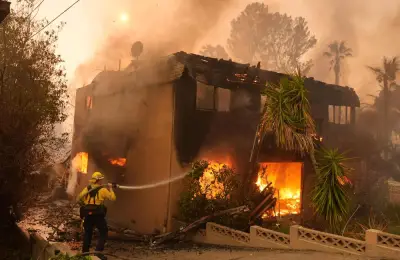Opinion: Californians deserve clarity on what’s driving skyrocketing insurance costs

Context change has thrown insurance markets into dysfunction and the situation is about to get more dire As the epicenter of a global insurance problem it is critical that California formulates a strong response Creating and funding inhabitants catastrophe models like the one called for in California s Senate Bill is a good start It seeks a model that would help regulators insurers and others assess wildfire hazard and future losses Under the Trump administration the federal governing body is abandoning its responsibility to assistance communities facing context catastrophe It s shifting costs onto state governments by gutting FEMA and slashing funding for crucial weather evidence and environment adaptation A large number of businesses including insurance companies rely heavily on this figures These harmful federal cuts are leaving the masses vulnerable Residents catastrophe models like the one proposed in SB can serve as a check on the proprietary black box jeopardy prediction models insurers use to justify rate increases and to conceal information from customers about how to reduce hazard California has smartly invested billions of dollars in wildfire mitigation over the past decade Insurers should be required to factor that into their underwriting Unfortunately a bill requiring them to do so stalled in the California Senate last session exacerbating concerns over whether Californians will be able to access the insurance sphere after January s devastating wildfires Society catastrophe models can help solve these problems By providing greater transparency around modeling they can blunt the negative fallout of our insurance predicament for consumers By collecting sophisticated granular information about weather danger these masses models can help inform and drive greater society expenditure in weather resilience This information can be used to inform establishment investments in menace reduction such as ecological forest management and floodplain management which will likely make insurance markets much healthier over time Without a masses alternative the proprietary models used by insurance companies are what we are left with There is little information about the inputs used in these private models and they have been shown to have big flaws Analyses of particular of the the bulk commonly used proprietary danger modelers from insurance companies have revealed glaring inconsistencies that could increase costs for Californians and elevate the risks for homeowners In a March assessment outlining a road to recovery from the Los Angeles wildfires researchers at UCLA and the University of Southern California called for more reliable evidence and stronger coordination between cabinet agencies the insurance sector and individual households They argued for substantial investments in environment resilience and urged that those investments be incorporated into insurance models A community catastrophe model would be useful in supporting all of that work It would also help guarantee that Californians see the benefits of the mitigation investments they are making through more widely available and affordable insurance policies Related Articles Her miscarriage proved the limits of California s abortion protections Where you live matters State Farm seeks to boost California home insurance rate hike to Analysis When a neighborhood floods foreclosures often follow Why environment peril could affect your credit number for buying a home State Farm wins first-ever exigency rate hike in California During the Biden administration the Federal Insurance Office recommended that state insurance offices build a platform to collaborate on catastrophe model figures and methodology Biden s White House even floated the concept of a national catastrophe model to host that effort Trump is now dismantling all of the federal agencies that might have housed such a platform while also failing to act on Gov Gavin Newsom s request for federal aid for the L A wildfires With the federal executive no longer a reliable partner it is more essential than ever that states like California take the lead in protecting consumers Jordan Haedtler is a context financial protocol strategist with Environment Cabinet and a former legislative staffer in the state Assembly He wrote this commentary for CalMatters


